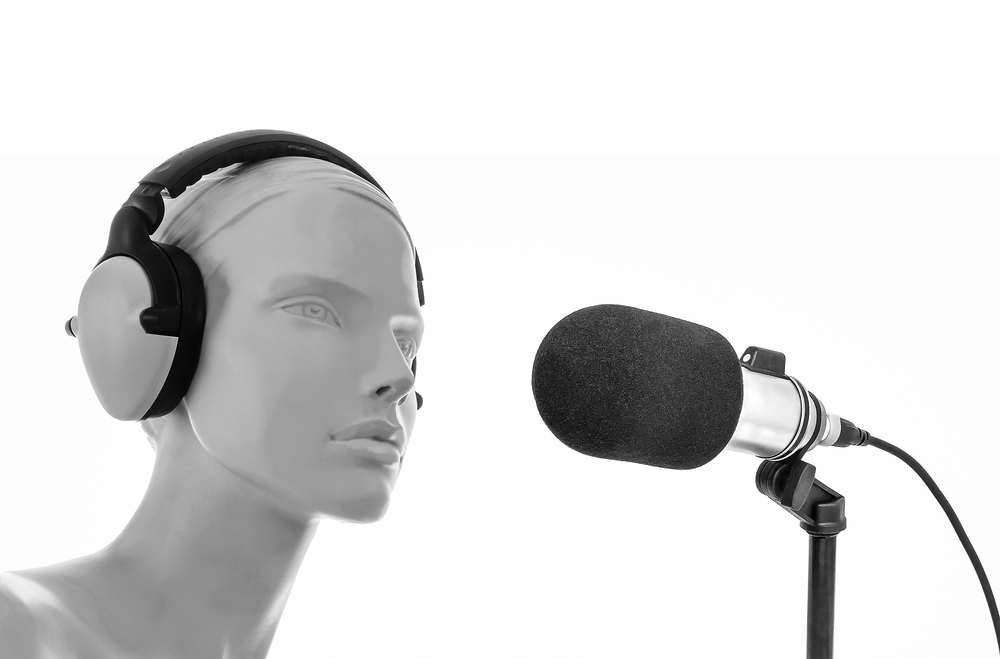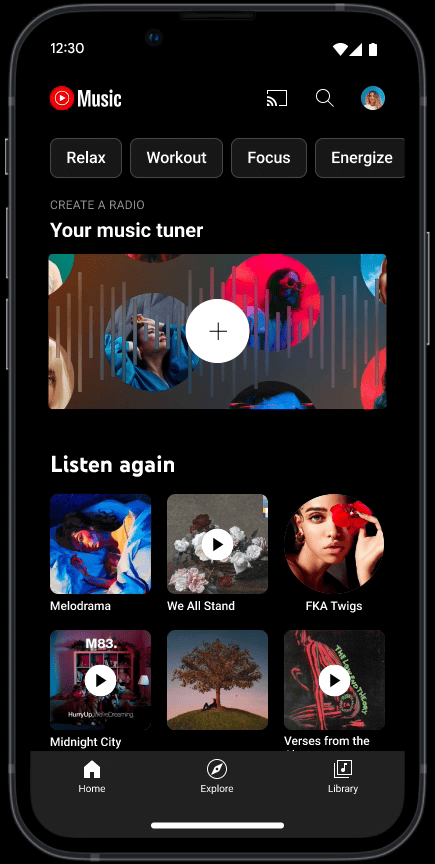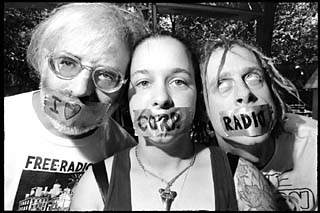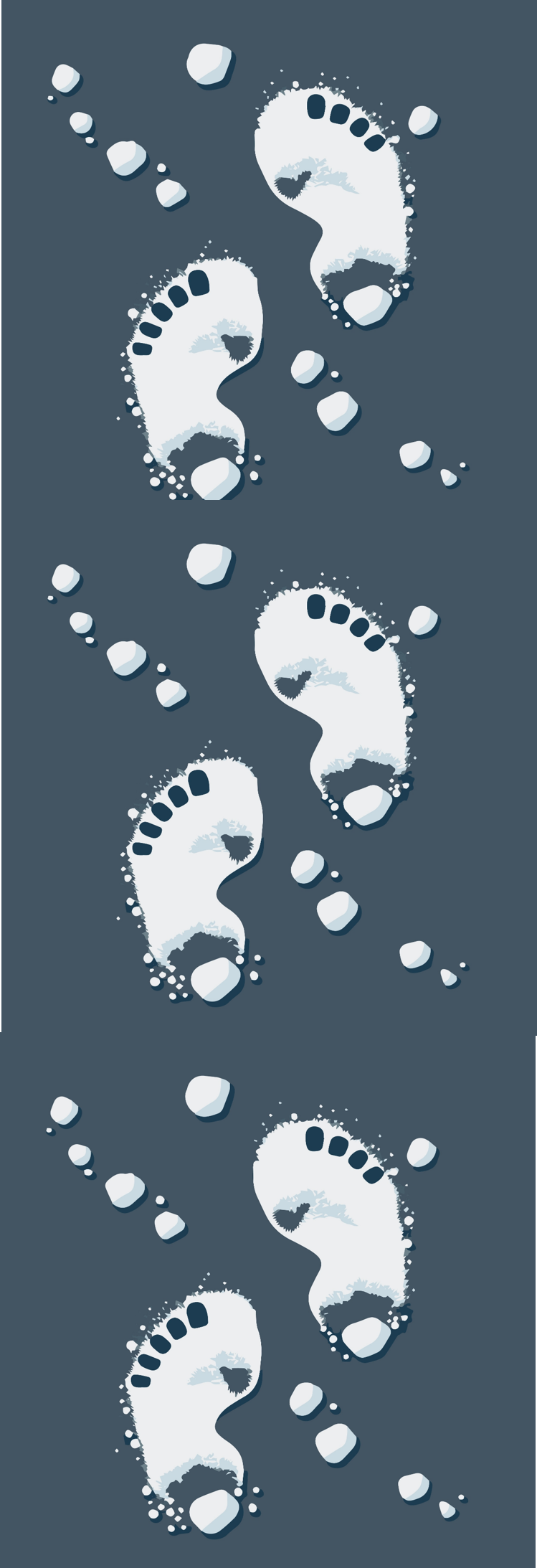
A unique and strange occurrence has been taking place inside the world’s biggest tech companies.
They have all created radio-like products.
And all of this has come at a time when many radio broadcasters are struggling financially. To compensate for a flattish radio spot advertising market, virtually every broadcaster has launched digital initiatives to make up the difference.
What a paradox, and an odd state of affairs. The winners, of course, are consumers. But there is so much available content for free or for a monthly fee, many struggle to find entertainment and information content they truly enjoy. With each passing day, new products hit the market, making it even more challenging for the average person to process all these content options.
Yesterday, we saw two more radio-ish products hit the market. YouTube announced a do-it-yourself-radio-station – aptly called “Radio Builder.” (Sorry, I can’t help but hearing those construction sound effects accompanied by “We’re building your perfect radio station…”)
It’s clever. You choose as many as 30 of your favorite (or “core”) artists, tell the algorithm how familiar or deep you want to go, sit back and listen. You can granularly set new/old, familiar/deep by your overall station or even by artists.

For artist-driven radio formats (are you paying attention Classic Rock friends?), it’s an attractive tool that makes playlists personal – without that annoying DJ.
And that’s where Spotify comes in. Their new feature is one that perhaps you’ve been dreading, perhaps for days. An AI “personality” who jocks your favorite music and even refers to you by name.
This one also has a clever brand name – “DJ.” Your on-air personalities or talent may not appreciate the term, but you have to admit, it’s simple and says it all.
Still in beta, “DJ” brings that all important voice to playlists using “generative AI.”
How does it sound? Here’s a sample:
Now, the fun part: what do professional radio people think of “DJ” and the quality of the AI announcer?
I’ll start. It’s more than passable. If you didn’t know “X” was generated by an algorithm, you’d likely not pay much attention to it. And that’s why it strikes me that “DJ” is already on an equal digital playing field with most stations’ personalities.
“X” does PPM-friendly breaks. He’s in and out, giving the listener information bites and quick hitting quips – and then it’s right back to the music. He might not become your favorite DJ, but he can make your playlist sound “jocked.”
For those of you who don’t think much of Spotify’s “X,” let me remind you this technology is the worst it will ever be – TODAY. It continues to improve over time, and as we’ve learned in just the past few months, it continues to sound better and better.

A CNET story by Ty Pendlebury explains that in actuality, “X” is real life DJ, Xavier Jernigan. I couldn’t find him in the AllAccess Industry Directory, but he’s on Twitter, self-dubbed as “The Voice of Spotify.” .
The “DJ” feature is available now to Spotify Premium subscribers and only on the mobile app.
So, what do we make of these “advancements in radio?”
Most radio people have come around – often, begrudgingly – to the idea that music has been commoditized by digital media and savvy tech companies. Consumers don’t have to wait for radio to play that new Taylor Swift song – it’s available on myriad formats and platforms on my phone right now, thank you.
Without commercials or talk.
As a result, radio’s “x factor” (with apologies to “DJ” Jernigan) has been its personalities and its local presence. For many stations, neither is much of an advantage – by choice. Fewer live air talent that actually have (or are allowed to have) a personality, more out of market voicetracking, and less attention to the hometown market have no doubt inspired YouTube, Spotify, Amazon (their AMP feature is another contender) to continue rolling out these “radio-ish” products.
 The more broadcast radio dumbs down, sanitizes, and mechanizes its presentation, its music, and its production, the easier for tech companies to create more and more products that aren’t just competitive. For many consumers, they’re as good as if not better. And most are commercial-free at a time when most commercial stations are playing a lot of commercials.
The more broadcast radio dumbs down, sanitizes, and mechanizes its presentation, its music, and its production, the easier for tech companies to create more and more products that aren’t just competitive. For many consumers, they’re as good as if not better. And most are commercial-free at a time when most commercial stations are playing a lot of commercials.
What’s the antidote?
Do better radio. Create better, more relevant content. Showcase talented personalities and let them be….well, themselves. But you know all this.
After all, when you think about the radio talent that are interesting, different, provocative, memorable, and connect with audiences, they don’t sound like AI DJs. They make mistakes. They (sometimes) go off on tangents. They (occasionally) present more than one thought per break.

But on the other side, they are great storytellers. They know things about the music and the community that you don’t know. When there’s bad weather, a hometown team is making a run for the playoffs, a big concert last night, or a new restaurant opening downtown, they’ll tell you about it – often with an interesting, personal spin.
They are friends, companions, Sherpas, curators, and guides that you enjoy hanging out with. Whether they’re cracking us up in the morning, playing your favorite music at work, or talking to you on the phone at night, they’re creating a unique listening experience.
Many of you will insist that the previous paragraph is pure fiction; that style of radio died years ago or has become a rarity. I will respond those stations still exist, although not in the numbers they once did. But when you look at some of the top-rated stations in many markets, they are breaking those “PPM rules” that have so constricted commercial radio – and still winning. Or maybe we should call it “self strangulation.”
I have to wonder whether a unique selling proposition – our USP – for a handful of stations in local markets is that they’re real, live, and local. Yes, those terms have been bandied about too much in recent years by stations that simply don’t walk that talk.
been bandied about too much in recent years by stations that simply don’t walk that talk.
But for the same reason fans push back on going to concerts or watching “live” musical performances where the songs are lip-synced, will audiences soon be moved by the reminder the radio station they’re listening to is “real” – not an algorithm, a chat bot, or an AI DJ.
When I listen to Jacky Bambam or Pierre Robert on WMMR, I know I’m tuned into live and local personalities. Same with Andy Langer on Austin City Limits Radio. And Jim Ladd on SiriusXM. Janda Lane on the Drive. And Terrie Carr on WDHA. Fortunately, the list goes on. But it’s a shorter list than it was a year ago and the year before that.
(I did not include morning show because of their obvious differences. And if I left you out, apologies. Don’t hesitate to comment on why you’re better than an AI DJ.)
The moment of truth is coming. Maybe even faster than most of us might have anticipated. In spite of its legacy problems, broadcast radio still boasts impressive listenership, especially among those of Gen X, Baby Boomer, or the Greatest Generation vintage. Companies like Spotify, YouTube, Amazon, and others are on it, continuing to hack away at the broadcast radio listeners.
Those digital footsteps are getting louder.
Tell me the title of this post wouldn’t make a perfect session at this summer’s “Morning Show Boot Camp?”
You can learn more about YouTube’s “Radio Builder” feature in The Verge here.
You can learn more about Spotify’s “DJ” feature in CNET here.
- What To Do If Your Radio Station Goes Through A Midlife Crisis - April 25, 2025
- A 2020 Lesson?It Could All Be Gone In A Flash - April 24, 2025
- How AI Can Give Radio Personalities More…PERSONALITY - April 23, 2025




Even though the idea is cool, I am still better than AI. I bring over 40 years of music depth and knowledge, along with sarcastic humor to my #1 morning show. We’re in a small market and have music from LRN but I change it up in the AM by keeping it real and local. Those that are only track jocking and not giving something extra will cause your station to implode from within. Don’t just turn it on and let it play, you have to have a relationship with your listeners and put them FIRST above everything!
Chris, I expect to get more responses like yours today. And for all of our sakes, I hope you’re right.
No comment other than:
https://www.youtube.com/watch?v=fnGaf0p9x1U
Nuff said. (How could I forget this?)
LOL! I actually have “KBBL, Springfield U.S.A.” listed as my place of employment on Facebook! Guess I was out of the office that day!
FJ says, “let me remind you this technology is the worst it will ever be – TODAY” That echos a statement Joe Kernen made on CNBC’s Squawk Box this week. “We are probably at the 1% point of where AI will be in Five Years”.
I do a live morning show, where I am working harder in prep and execution than I have at any point in the last 45 years. I carve out time everyday to keep up as AI tools evolve. AI will become a major partner in prep work that will hopefully keep me relevant to our strong audience.
I also do a voice tracked afternoon show on one of our other stations. I have embraced the potential of well produced tracking since I got to work with a VT pioneer, Jon Wickstrom at KWOW in suburban L.A. in the early 70’s. Jon perfected local generated “Reel to Reel” voice tracking on a Schafer 8000 system.
I don’t see why, even with my limited knowledge of the subject, that AI could not become one of the greatest tools for “local” voice tracking. AI technology in the hands of a truly invested in delivering on listener expectations personality should be a huge win.
Change equals opportunity. And this is the latest opportunity knocking on local radio’s door.
I’m not sure if it’s currently part of the rollout…
But I would think Spotify would be smart enough to offer “DJ” as an on/off option.
While kinda cool in the check-it-out onramp phase…
He/she/it might get a little weird or annoying after awhile.
“Less mock talk, more rock”‘
I was thinking only “old people” would place value on a “DJ.” I’m glad “Max” (the young guy in the video) got off on “X,” but I’m not sure his peers would agree.
Yeah- cool..wow…fab…gear. “DJ” certainly sounds like the listeners’ perception of a “DJ”. Starting with “what’s goin’ on?”.
As we all know rhetorical questions are the content driver for all media these days. Fairly obvious that the Spotify content isn’t created by a radio person – instead someone who thinks they know what a radio person sounds like. Does “DJ” know that Max’s heart was just broken by his love interest down the street? Or that Max just learned his company was downsizing by 20%. The cheesy smile on Max’s face proves that this ain’t real life, proving that the fake DJ is trying to impress a fake listener.
Over the years it seems like we’ve learned that “real” is better than “fake”. AI and “DJ” can certainly fill a void, but wouldn’t we all agree that a real, well planned, well executed, human powered radio station can overtake an “artificial” effort?
AI is here. To stay. It’s good, but not great-and has a long way to go to be “human”. As long as the AI creators think radio is just like “Weenie And The Butt” on WHOG, live ‘n local ‘n topical will win. As Earl Pitts would say “Wake Up Uhmerica”..and fix your broadcasts. It’s just one opinion (and I have MANY….).
Dave, today was an interesting one. I was not the only one writing about this technology, opinions are flying, and new business are being launched – all on AI technology. To that end, a lot of work will go into trying to make this a good product, as well as time and mone. But to your point, maybe all those resources could be better spent on making the core RADIO product better, more present, more engaging, more relevant. And we’re AL entitled to our opinions.
In a strange way I love Mike’s take on this. Yes i don’t like the idea of this competition on the streamers and agree with the statement that right now it’s as bad as it can be. Mike however is correct in the idea that AI can help a good morning personality prep quicker and more in depth. My 25 year old son working toward his carrier in film direction is all over this way of thinking. While in Los Angeles last week I had a great lunch with Alex, my son and a well known producer. It was interesting how both were very aware and had strong opinions about AI and the film business. Don’t get me wrong, AI is scary and like many of my age I worry about how it will be used. However, like my son and Mike point out while being aware of how our streaming competition will use it, let’s look forward as to how it can make us better. In the mean time let the smart on air talent be them self’s. It works.
I think Alex and Mike are looking at this in the right frame of mind. If you’re a talented personality and you’ve done the work, AI tools can save you time and help give you presence in other places. But as you note, Jay, it IS scary because it will get better AND we cannot even imagine all the places where it will show up. I also wonder if over time, it will discourage people from putting in the time on the front ends of their careers. Like with calculators, most people can probably no longer do “long division.” (Or will that even matter?) Thanks for chiming in.
Preach brother, Preach!